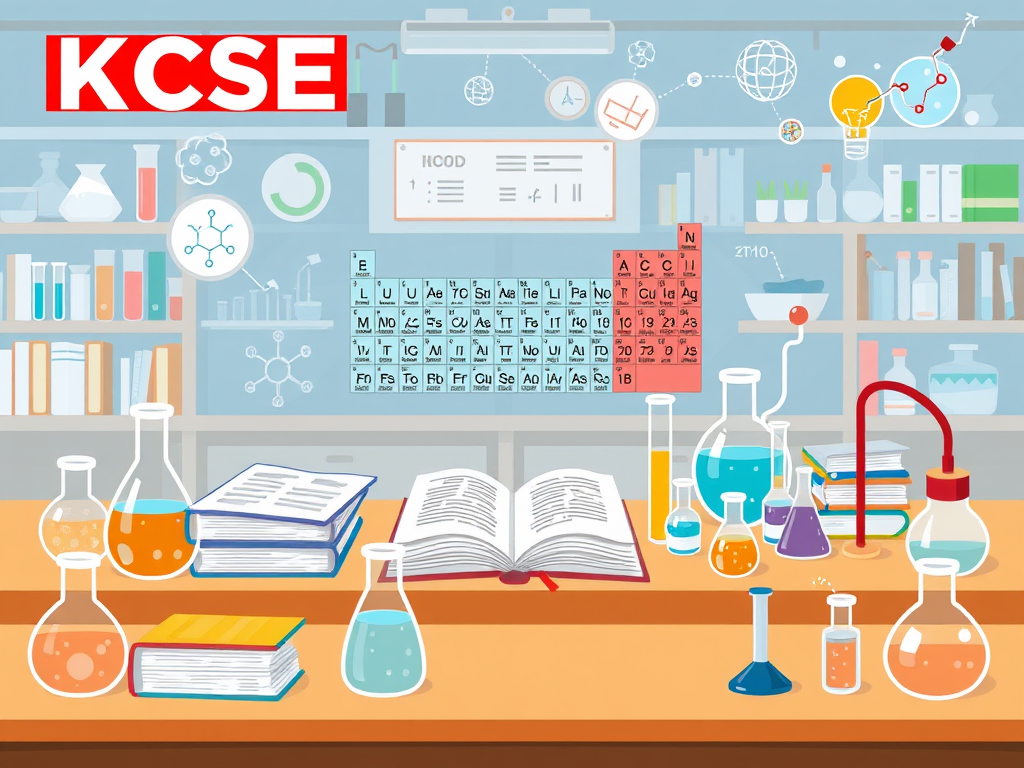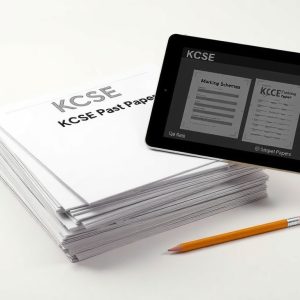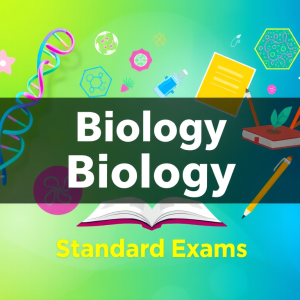Description
The document is a chemistry examination paper, specifically a mock exam for the Kenya Certificate of Secondary Education (KCSE) Chemistry Paper 3. It outlines the structure and requirements for candidates taking the exam. Here’s a comprehensive overview:
Document Overview:
- Title and Identification:
- The title indicates it is a Chemistry paper, designated as “233/3.”
- The document includes sections for candidates to fill in their names, index numbers, school names, signatures, date, and class.
- Instructions to Candidates:
- Candidates are instructed to answer all questions in the spaces provided.
- They are not allowed to start working immediately and have a total of 2 hours and 15 minutes for the exam, which includes reading time.
- Candidates must show all calculations clearly and may use mathematical tables and calculators.
- Question Structure:
- The paper consists of three main questions, each with specific tasks and marks allocated:
- Question 1: Involves practical work with solid sodium carbonate and hydrochloric acid to determine impurity percentages. It includes multiple parts requiring calculations, chemical equations, and data recording from titrations.
- Question 2: Focuses on investigating the effect of concentration on reaction rates between sodium thiosulphate and hydrochloric acid. Candidates must set up experiments, record observations, and analyze data through graph plotting.
- Question 3: Tests candidates’ ability to perform various chemical tests on provided solids, requiring observations and inferences about the substances’ identities based on their reactions.
- The paper consists of three main questions, each with specific tasks and marks allocated:
- Marking Scheme:
- The document includes a detailed marking scheme for each question, specifying how marks are awarded for correct answers, completeness, and accuracy in calculations.
- It emphasizes the importance of clear data presentation, consistent decimal usage, and correct scientific notation.
- Practical and Theoretical Focus:
- The paper combines both theoretical knowledge and practical laboratory skills, assessing candidates’ understanding of chemical reactions, calculations involving molarity, and the interpretation of experimental results.
- Chemical Reactions and Observations:
- Candidates are required to write balanced chemical equations and perform qualitative analysis through various tests, such as identifying gases produced, observing color changes, and conducting titrations.
Conclusion:
The document serves as a comprehensive assessment of students’ understanding of chemistry at the secondary school level, focusing on practical skills, chemical calculations, and theoretical knowledge applicable in real-world laboratory settings. The structure encourages critical thinking and analytical skills, essential for future studies in chemistry or related fields.




Reviews
There are no reviews yet.